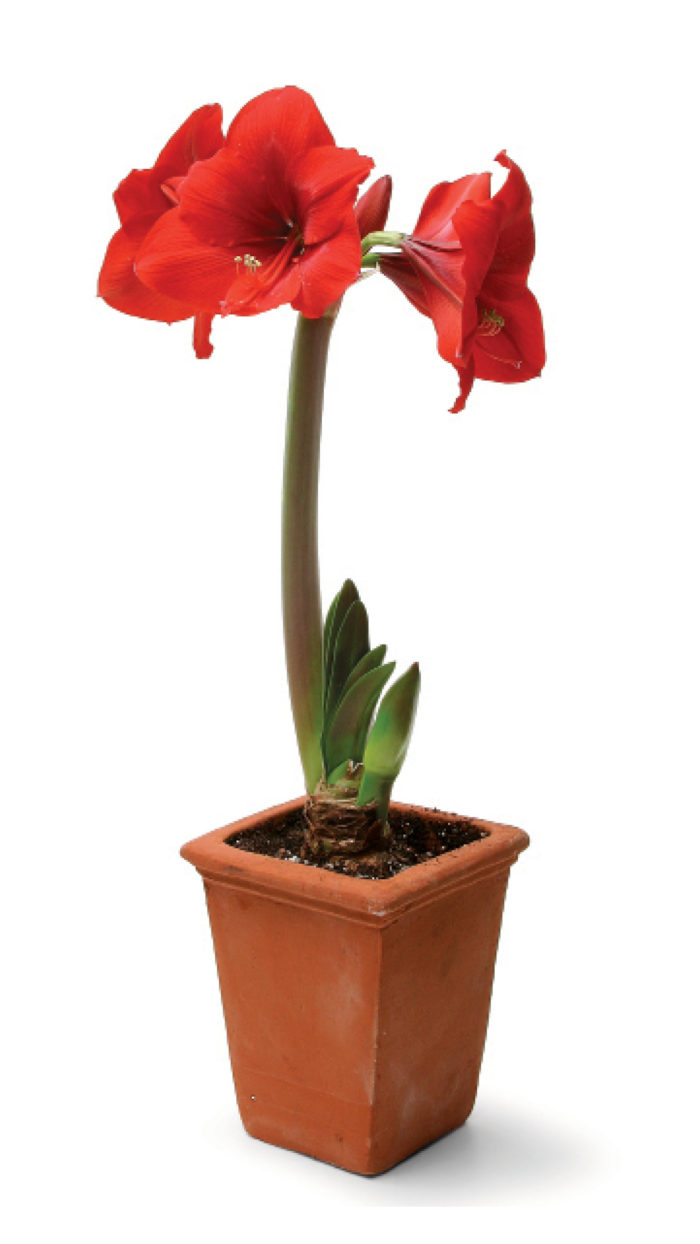
When you hear “bulbs,” you usually think spring, right? But you can enjoy the magic of bulbs a whole lot sooner. Smack dab in the middle of blustery winter, when you absolutely, desperately, unequivocally need the flower power brought to you by bulbs, there are plenty of potential performers to fill your sills. And many winter-blooming bulbs are blissfully easy to host indoors. Bulbs can be winter’s best-kept secret.
Winter bulbs come in all shapes and sizes. The only common denominator (with just a few exceptions) is that winter bulbs prefer bright light to achieve the best results. Besides that, bulbs have another trait that endears them to the hearts of indoor gardeners: most need little care. Here are a few to get you started.
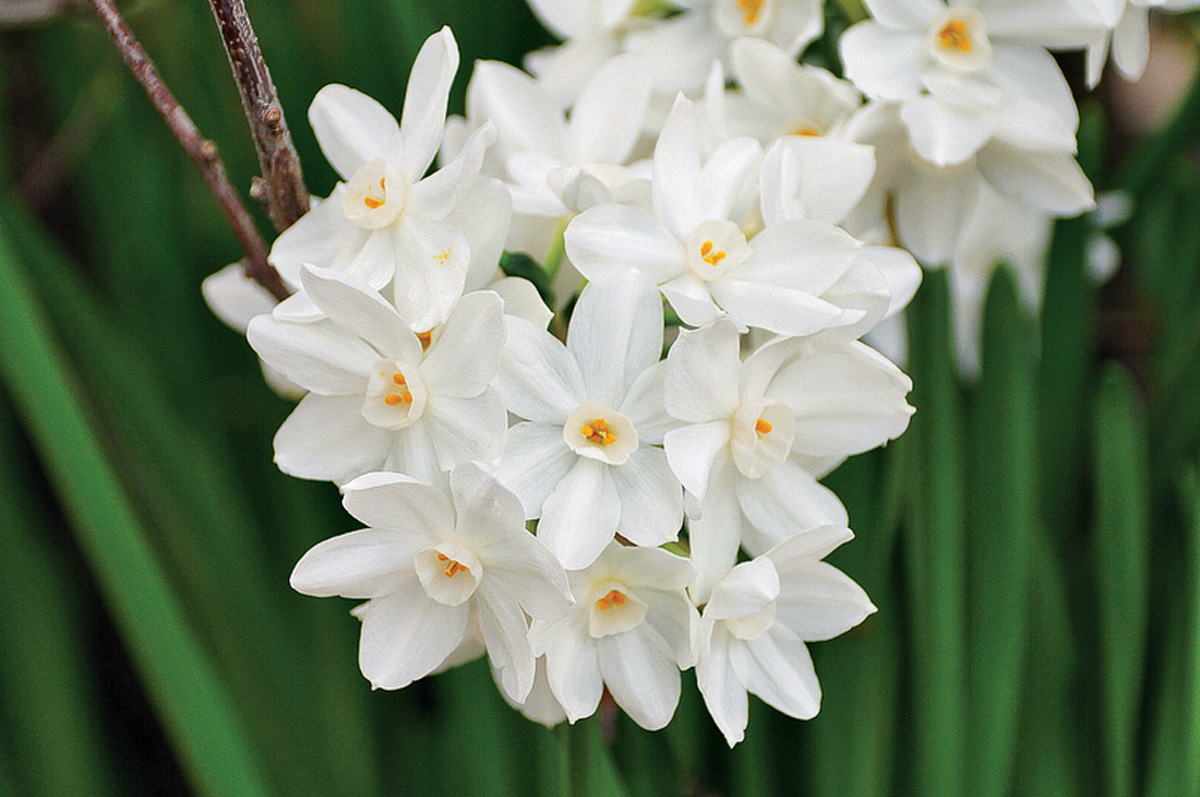
Paperwhites are fragrant classics (Narcissus spp. and cvs.)
Actually, paperwhites are just precocious daffodils. Hailing from the Mediterranean, North Africa, and similar warm regions, paperwhites are not frost hardy. However, they make up for that lack by bursting into bloom a few brief weeks after being planted in early winter, no chilling period required (or wanted). In fact, they require no soil to perform, and the bulbs can be buried in pebbles or stones. Their scent is intense and can be overwhelming for some of us. But the flowers are a visual crowd pleaser for everyone. Give them bright light and a support to keep the bloom spikes and foliage from flopping. And if you’re not wedded to white, try ‘Grand Soleil d’Or’, which is a yellow-and-golden version with a much more agreeable citrusy scent.
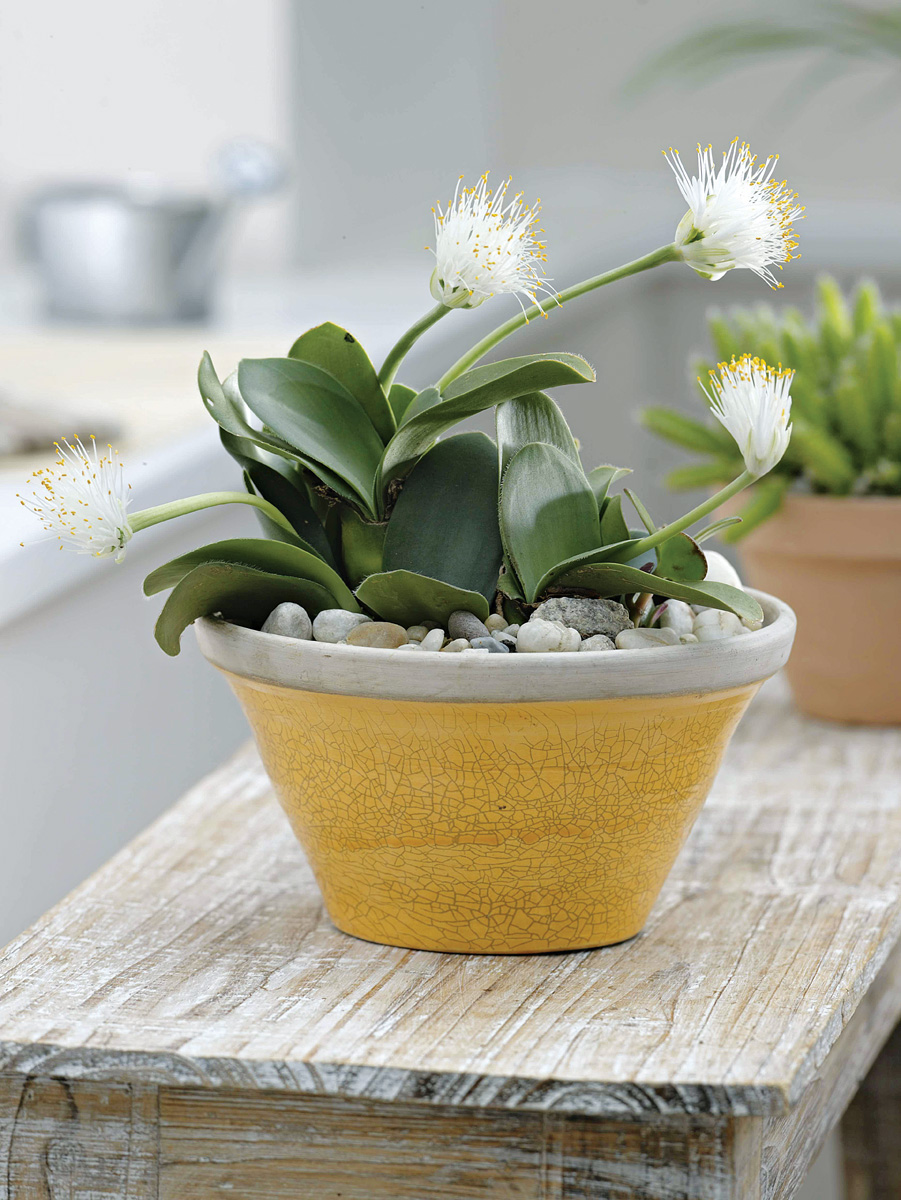
Dappled snowbrush looks great even without flowers (Haemanthus albiflos)
Another no-brainer in the bulb realm, dappled snowbrush is a South African native with an entirely different type of flower. It sends out paintbrush-like white flowers tipped with yellow pollen. The flowers are a strong boasting point, for sure. But even when your snowbrush isn’t in blossom, the broad, flat, felted leaves are beyond handsome. Plant the bulbs so the tips are exposed. Dappled snowbrush often grows all year round and never goes dormant, adding bulbs on a regular basis to look like a bundle of wagging tongues that would make Mick Jagger envious. Bright light is needed to prompt those divine flowers, but the plant will survive with lesser light. Not only that, but it’s nearly unkillable. Forget to water it occasionally, and dappled snowbrush doesn’t bat an eyelash.
Amaryllis doesn’t need much from you (Hippeastrum spp. and cvs.)
 If you don’t know these South American natives, you need to become keyed in to them because they can singlehandedly rescue you from winter’s abyss. We’re talking Frisbee-sized blossoms in bright colors (or pure white, if you prefer) on tall stems. Even better, you just plop the bulbs into any old soil and they perform. In fact, plump flower buds will emerge from bulbs and start stretching toward the light even before you pot them up. The only trick to amaryllis lies in resisting the urge to coddle them. Don’t continually pour on the water. Don’t give the bulbs huge containers. And skip the fertilizer while they’re blooming. (You can feed them later during early summer when the straplike leaves are gathering steam for next winter’s riot.) Nudge them into dormancy by withholding water in late summer on their second year. Remove the brown leaves and then wait for them to regrow. They might be off schedule while they become accustomed to our climate. As soon as growth resumes, a bright window will keep the flower stem compact. Rotating the plant will make sure it doesn’t lean toward the light. And that’s it. Gratification doesn’t get any easier than amaryllis.
If you don’t know these South American natives, you need to become keyed in to them because they can singlehandedly rescue you from winter’s abyss. We’re talking Frisbee-sized blossoms in bright colors (or pure white, if you prefer) on tall stems. Even better, you just plop the bulbs into any old soil and they perform. In fact, plump flower buds will emerge from bulbs and start stretching toward the light even before you pot them up. The only trick to amaryllis lies in resisting the urge to coddle them. Don’t continually pour on the water. Don’t give the bulbs huge containers. And skip the fertilizer while they’re blooming. (You can feed them later during early summer when the straplike leaves are gathering steam for next winter’s riot.) Nudge them into dormancy by withholding water in late summer on their second year. Remove the brown leaves and then wait for them to regrow. They might be off schedule while they become accustomed to our climate. As soon as growth resumes, a bright window will keep the flower stem compact. Rotating the plant will make sure it doesn’t lean toward the light. And that’s it. Gratification doesn’t get any easier than amaryllis.

Purple shamrock has year-round beauty (Oxalis regnellii var. triangularis)
You can find some really snappy oxalis by going no further than the supermarket. If bang for your buck is a priority, go for purple shamrock. Featuring a triangular threesome of leaves emblazoned with a deep purple heart against a nearly black charcoal background, this plant glows in a window even before the pale lilac flowers appear. Another plus is that it doesn’t take up much space on your sill. Purple shamrock stands 6 to 8 inches tall, and its width will slowly increase as bulbs multiply. Bright light is optimal, but bulbous oxalis don’t pout if you can only muster an east- or west-facing window.
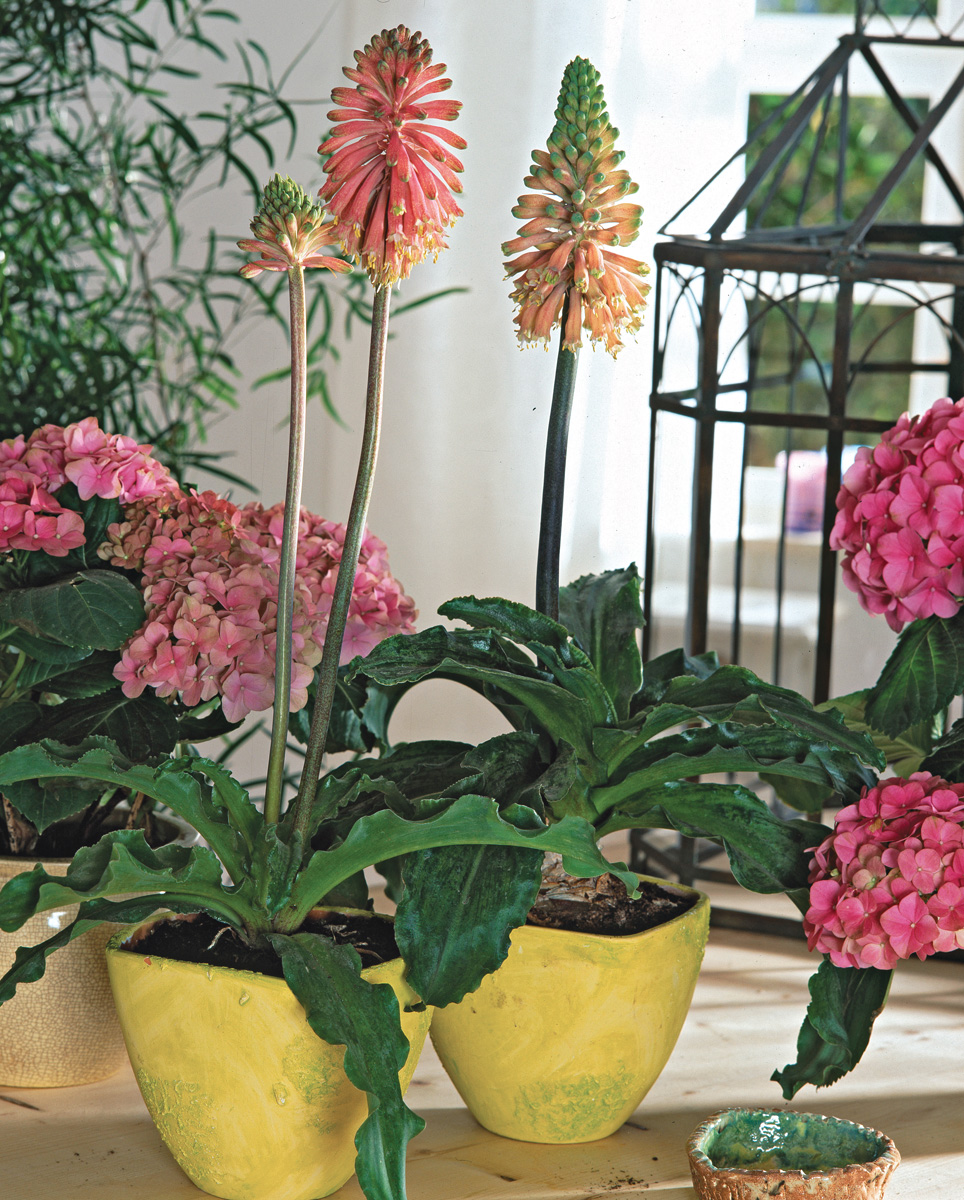
Forest lily cures the winter blues (Veltheimia spp. and cvs.)
An ultra-easy introduction into the South African bulb arena, forest lily looks great even before the midwinter flower spikes peek out from their nest of furled, shiny green, wavy leaves. Forest lilies begin to make growth in autumn but take the leisurely route to flower spikes, which -finally emerge in late winter. Clusters of plump bulbs congregate -together; plant them so that the crowns sit just above the soil line rather than buried beneath it. Periodic repotting keeps them happy and productive, while bright light prompts those remarkable flowers that put winter on the map.
Cyclamen has many looks (Cyclamen persicum)
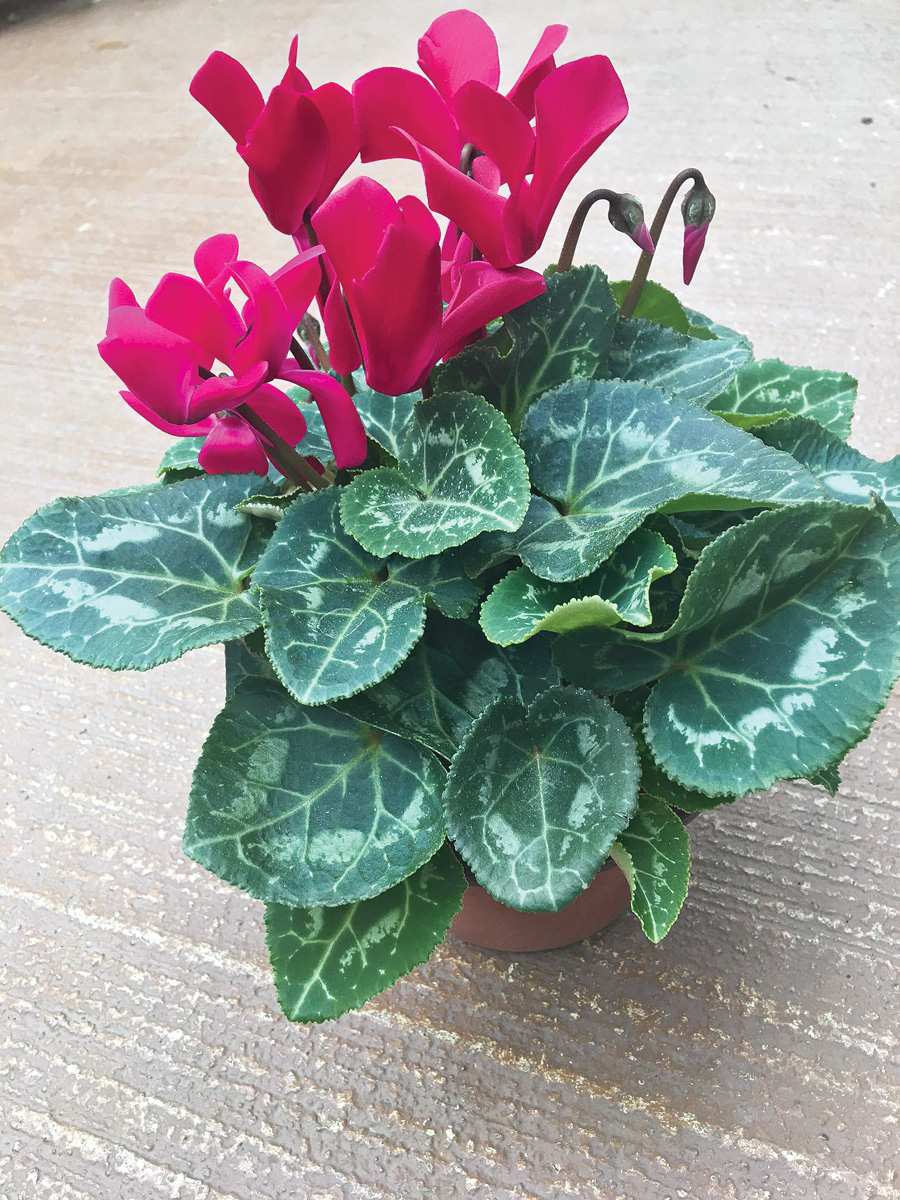
The many kinds of cyclamen that are sold for just about every winter holiday keep getting more irresistible. From large plants with flowers that look like big, beefy shooting stars to tiny versions that brighten the most crowded windowsill, there’s plenty to like in the cyclamen contingent. The color range keeps within the white, pink, salmon, and red realm. The foliage is part of the package, with alligator-patterned leaves that form a tidy cluster around the flowers. The only problem is that the package tends to wilt with a flair that could be likened to histrionics. Forget to water, the foliage faints. Water too much, the whole thing collapses. You want a happy medium. Given the quick-fire wilting scenario, it’s much safer to grow a cyclamen in indirect light. Water it lightly on a regular basis. Cyclamens seem to prefer clay pots rather than plastic ones. Try growing your cyclamen in a hurricane lantern—like a terrarium—to avoid the perky/wilted flipflop. It will love it.
| basics |
Care and feeding of winter bulbs
Here’s the lowdown for keeping your winter bulbs thriving and pumping out the perks in midwinter.
• Light: As much sun as you can muster is optimal. An unobstructed south-facing window is ideal, but a bright east- or west-facing window will do the trick.
• Soil: A well-drained fertile soil is imperative. A cactus-and-succulent soil is ideal. Select a soil with perlite rather than vermiculite to increase drainage.
• Containers: In general, most bulbs prefer a shallow container that is not too generous. Clay containers are preferred over plastic or metal.
• Water: Serve drinks when the soil is slightly dry to the touch. This will vary according to the weather even when you’re growing indoors. Bulbs do not like to be very dry.
• Feeding: If your soil is sufficiently rich, no fertilizer is needed.
• Grooming: Remove yellowing and dead leaves. Deadhead spent flowers.
• Dormancy: With the exceptions of purple shamrock and dappled snowbrush, which are evergreen, most winter bulbs go dormant—usually in April or May. Stop watering, and store the bulbs in a location where they will remain dry throughout summer. The exception is amaryllis, which usually grows and requires watering until mid-to-late summer.
• Annual reboot: Divide and repot winter bulbs into fresh soil in August before active growth begins.
—Tovah Martin is the author of several books on houseplants, including The Unexpected Houseplant: 220 Choices for Every Spot in Your Home.
| Sources |
American Meadows
Shelburne, VT
877-309-7333
americanmeadows.com
Mountain Crest Gardens
Fort Jones, CA
877-656-4035
mountaincrestgardens.com
Telos Rare Bulbs
Ferndale, CA
telosrarebulbs.com
White Flower Farm
Litchfield, CT
800-503-9624
whiteflowerfarm.com

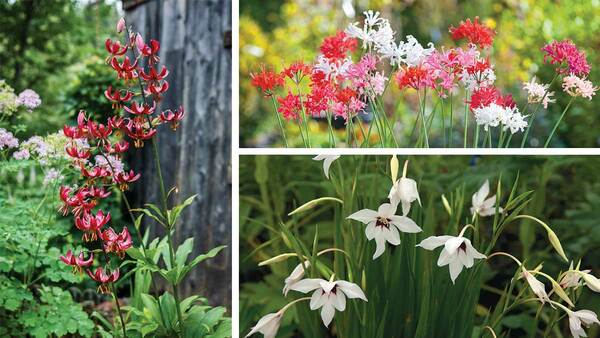

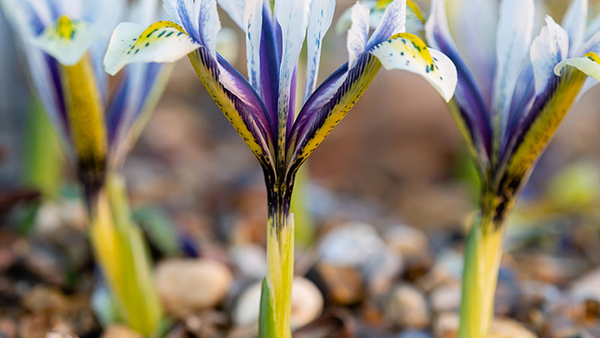













Comments
Log in or create an account to post a comment.
Sign up Log in